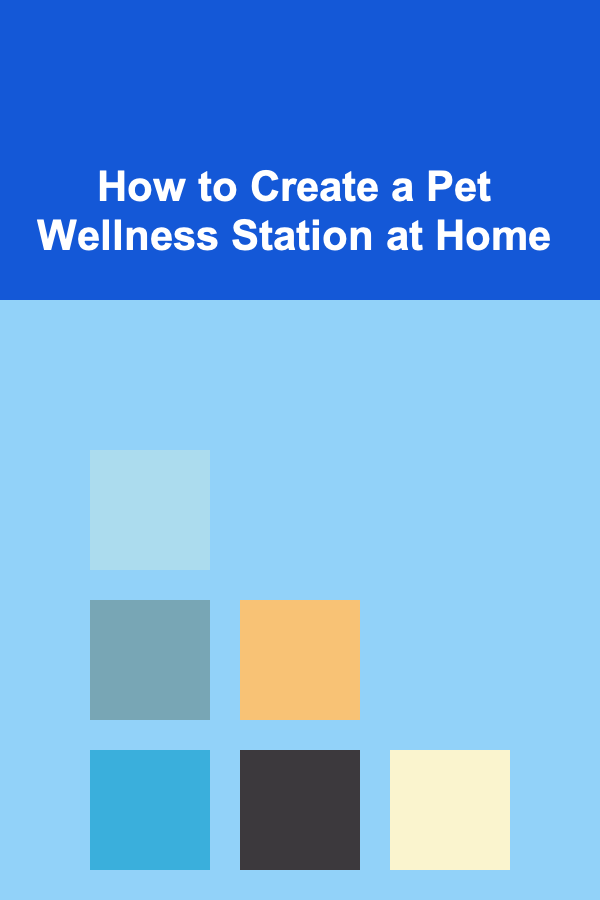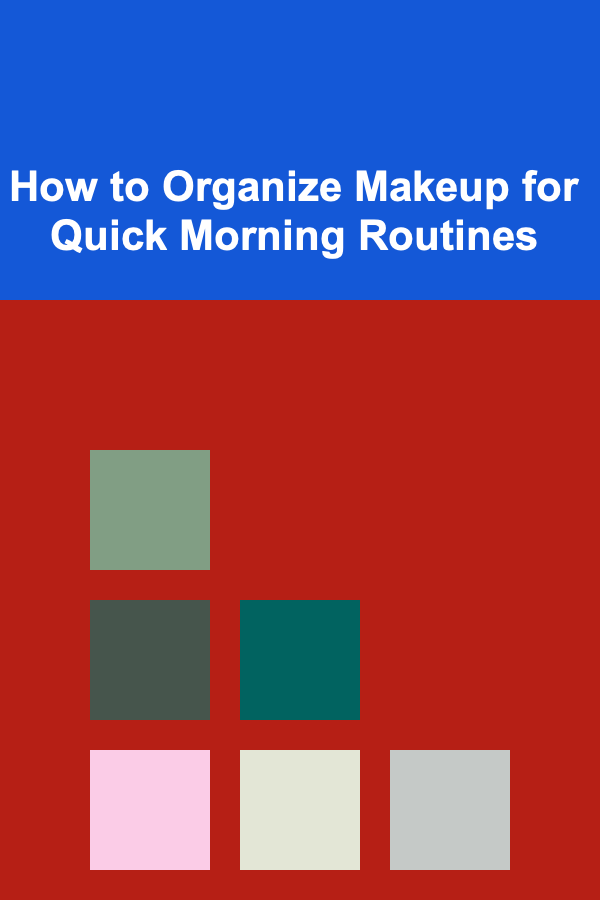
Effective Strategies for Product Designers: From Concept to Creation
ebook include PDF & Audio bundle (Micro Guide)
$12.99$9.99
Limited Time Offer! Order within the next:

Product design is an intricate process that combines creativity, technical skills, and user-centric thinking. To be an effective product designer, one needs to navigate the complexities of user needs, technological constraints, and business goals. A successful product design journey is not linear but involves several iterative steps, including ideation, prototyping, user testing, and refinement.
In this guide, we will explore actionable strategies that product designers can adopt to streamline the design process and ensure the delivery of meaningful, functional, and aesthetically pleasing products---from concept to creation.
Understanding the Problem and Defining the Scope
Before jumping into the design process, it's crucial to deeply understand the problem at hand and define the project's scope. This stage sets the foundation for everything that follows.
1.1. Conduct Thorough Research
Research is the bedrock of great product design. It involves gathering insights from users, stakeholders, and competitors. Designers should approach research from multiple angles:
- User Research: Identify the target audience and engage with them through surveys, interviews, or usability testing. Understand their pain points, preferences, and behaviors.
- Market Research: Analyze existing solutions in the market. Understand how competitors address similar problems and look for opportunities for differentiation or improvement.
- Business Requirements: Meet with stakeholders to define the business objectives. Make sure the product design aligns with these goals, whether it's improving customer retention, increasing revenue, or addressing a specific pain point.
1.2. Define Clear Product Requirements
Once the research is complete, document the insights and define clear product requirements. These requirements should serve as a blueprint for the design and development phases. Some key elements to include:
- User Needs: List out the key pain points and needs of the users that the product will address.
- Functional Requirements: Determine the must-have features and functionalities that the product should offer.
- Technical Constraints: Account for any technical limitations that may impact design, such as platform limitations, hardware specifications, or integration requirements.
1.3. Develop a Design Brief
A design brief is a critical document that communicates the vision, goals, and expectations for the product. It acts as a roadmap for the entire design process. Key sections of a design brief include:
- Project Overview: A high-level description of the project.
- Target Audience: Demographic information and key characteristics of the users.
- Core Objectives: The goals the design must achieve.
- Design Constraints: Any limitations or constraints that must be considered.
- Success Metrics: How success will be measured once the product is live.
Ideation and Conceptualization
Once the groundwork is laid out, it's time to move into the ideation phase. This is where creative solutions begin to take shape, and designers translate research into concrete concepts.
2.1. Brainstorming Ideas
Brainstorming is one of the most important steps in the product design process. It's an opportunity to generate a wide range of ideas, considering different angles and perspectives.
- Divergent Thinking: Encourage broad thinking by exploring as many solutions as possible, even unconventional ones. This opens the door to innovative ideas.
- Collaborative Sessions: Involve team members from various departments (e.g., developers, marketers, product managers) to bring different perspectives to the table.
- Mind Mapping: Use tools like mind maps or affinity diagrams to visually organize ideas and find relationships between them.
2.2. Sketching and Wireframing
Once ideas have been generated, move from abstract concepts to more concrete representations. Sketching and wireframing are essential tools in this phase.
- Low-Fidelity Sketches: Start with simple hand-drawn sketches to quickly explore ideas and layout options without getting bogged down by details.
- Wireframes: Develop wireframes to outline the structure and layout of the product. Wireframes focus on functionality rather than aesthetics, allowing you to prioritize content and features.
2.3. Concept Validation
Before moving forward with detailed design work, it's essential to validate the concepts. Engage stakeholders and users early in the process to get feedback on the wireframes and ideas.
- Stakeholder Feedback: Present your wireframes or prototypes to stakeholders to ensure alignment with business goals.
- User Testing: Conduct usability tests with a small group of representative users to identify any pain points or confusion in the design.
Designing the User Interface
With the concept validated, the next step is to create the visual design and user interface (UI). This is where the product starts to take shape, both in terms of aesthetics and usability.
3.1. Define the Design System
A design system is a collection of reusable components and guidelines that maintain consistency across the product. Developing a design system early ensures uniformity in UI elements, colors, typography, and iconography.
- UI Components: Define buttons, input fields, navigation bars, and other interactive elements.
- Color Palette: Choose colors that align with the brand and enhance user experience, ensuring readability and accessibility.
- Typography: Select fonts that are readable and align with the overall tone of the product.
3.2. Create High-Fidelity Mockups
High-fidelity mockups are detailed visual representations of the final design. They include actual colors, typography, and images, offering a realistic preview of the final product.
- Tool Selection: Use design tools like Sketch, Figma, or Adobe XD to create precise mockups. These tools allow you to iterate quickly and collaborate with team members.
- Focus on Visual Hierarchy: Ensure that important elements, such as CTAs (call-to-actions) or navigation buttons, stand out visually, guiding the user through the interface.
3.3. Prioritize User Experience (UX)
UI design should never sacrifice UX. Focus on making the interface intuitive and easy to use by:
- Simplicity: Avoid cluttering the interface with too many elements. Stick to the essentials and ensure that the design supports user goals.
- Consistency: Use consistent design patterns across the interface to reduce cognitive load and help users navigate the product smoothly.
- Accessibility: Design with accessibility in mind, ensuring that users with disabilities can interact with the product effectively (e.g., using readable fonts, color contrast, and keyboard navigation).
Prototyping and User Testing
Prototyping allows you to bring your designs to life in a tangible form. This phase is crucial for testing ideas, gathering feedback, and refining the design before development.
4.1. Build Interactive Prototypes
Interactive prototypes simulate the user experience and can be used to demonstrate how the product will function once complete.
- Tools for Prototyping: Use tools like Figma, InVision, or Marvel to create clickable prototypes that allow stakeholders and users to interact with the design.
- Iterate Quickly: Prototypes should be iterated upon rapidly to test different design variations, interactions, or features before settling on the final version.
4.2. Conduct User Testing
User testing is essential to validate the design and ensure it solves real user problems. This can be done through several methods:
- Usability Testing: Ask users to complete tasks using the prototype and observe their interactions. Note any points of friction or confusion.
- A/B Testing: Test two or more versions of a design with real users to determine which one performs better in terms of user engagement or conversions.
- Feedback Sessions: After testing, gather feedback from users to understand their experience, pain points, and suggestions for improvement.
4.3. Analyze Results and Refine the Design
After gathering feedback, analyze the results and identify common themes or issues. Use this information to refine the design, making adjustments to address pain points and improve the overall user experience.
- Prioritize Feedback: Not all feedback will be actionable. Focus on changes that will have the greatest impact on the product's success.
- Iterate and Improve: Design is an iterative process, and it's important to continuously refine the product to meet user needs and expectations.
Handoff to Development
Once the design is finalized, it's time to hand it off to the development team. Clear communication and collaboration between design and development are essential for a successful product launch.
5.1. Provide Design Assets
Ensure that the development team has access to all the necessary design assets, including high-fidelity mockups, design specifications, and any related documentation. Tools like Zeplin or Figma allow for seamless handoffs, providing developers with all the details they need.
5.2. Collaborate During Implementation
Collaboration doesn't stop once the handoff occurs. Stay involved during the implementation phase to ensure the design is being accurately translated into the final product.
- Regular Check-ins: Schedule regular meetings with the development team to address any design-related questions or challenges that arise.
- Testing and Quality Assurance: Work with the QA team to test the product and ensure that the design is functional and free of any usability issues.
Post-Launch Monitoring and Iteration
The product design process doesn't end with the launch. Post-launch monitoring is essential for identifying areas of improvement and ensuring long-term success.
6.1. Collect User Feedback
After launch, continue to gather feedback from users to identify any areas of the product that could be improved.
- Surveys and Interviews: Conduct surveys or follow-up interviews with users to understand their experiences.
- Usage Analytics: Use analytics tools to track user behavior and identify bottlenecks or features that are underused.
6.2. Iterate Based on Data
Use the feedback and data collected to make iterative improvements. This could include refining features, adjusting UI elements, or adding new functionalities to better meet user needs.
Product design is an ongoing process that requires a combination of creativity, analytical thinking, and collaboration. By following these strategies---from understanding the problem, through ideation and prototyping, to post-launch iteration---designers can create products that are not only functional and user-friendly but also capable of delivering long-term value to both users and businesses.
Reading More From Our Other Websites
- [Home Holiday Decoration 101] How to Set the Table with Perfect Christmas Table Settings
- [Home Cleaning 101] How to Clean a Fireplace: A Comprehensive Guide to Safety and Hygiene
- [Organization Tip 101] How to Store Outdoor Fitness Equipment Safely
- [Home Family Activity 101] How to Create a Family Book Club and Choose the Best Books
- [Home Budget 101] How to Save Money on Insurance Premiums
- [Organization Tip 101] How to Allocate Funds for Entertainment and Leisure
- [Home Party Planning 101] How to Plan a Cocktail Party with a Classy Touch
- [Home Storage Solution 101] How to Organize Your Home for Easy Access to Frequently Used Items
- [Soap Making Tip 101] Best Tips for Achieving Swirl Patterns in Dual‑Tone Soaps
- [Home Soundproofing 101] How to Soundproof a Hollow Core Door for Better Privacy

How to Create a Pet Wellness Station at Home
Read More
How to Make a Checklist for Safety Inspections in Schools
Read More
How to Make Money from Your Deep Learning Models Without Investment
Read More
How to Organize Makeup for Quick Morning Routines
Read More
How to Throw a Memorable Themed Party Without Breaking the Bank
Read More
How to Use Dividers for Privacy in Shared Rooms
Read MoreOther Products

How to Create a Pet Wellness Station at Home
Read More
How to Make a Checklist for Safety Inspections in Schools
Read More
How to Make Money from Your Deep Learning Models Without Investment
Read More
How to Organize Makeup for Quick Morning Routines
Read More
How to Throw a Memorable Themed Party Without Breaking the Bank
Read More